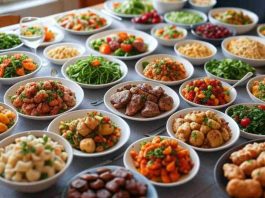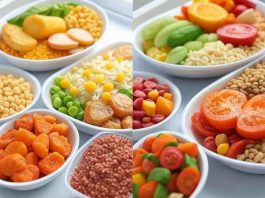To maintain good physical condition on dialysis, it is essential to eat well and to have a varied diet. However, certain components of the food that the kidney eliminates during normal functioning can accumulate in the body and cause various health problems.
Certain dietary rules must, therefore, be follow. They must adapt according to the nutritional needs of the patients, the quality of the dialysis they receive, their possible residual renal function, and their biological results. Some dialysis structures offer the help of a dietician.
Table of Contents
Mineral Intake
Potassium and phosphorus are minerals very present in the food, necessary for the good functioning of the organism, but which can accumulate there with sometimes serious consequences when one is dialyzed.
Potassium is present in large quantities in pulses, dry fruits, oilseeds, certain vegetables and fresh fruits, chocolate, instant drinks. In hemodialysis, these foods should be limited. Replacement salts are contraindicated.
Phosphorus is present in large quantities in hard cheeses and processed cheeses, organ meats, canned fish, oleaginous fruits, industrial foods containing phosphate additives (certain cooked dishes, certain meats). Some sodas provide phosphorus in the form of phosphoric acid. In dialysis, these foods should be limited.
There are specific drugs called chelators. Which can prevent the intestinal absorption of potassium and phosphorus and therefore use in addition to the diet. Even if these measures are follow, it is essential to take these treatments, which can alleviate nutritional constraints.
Water Supply
When the kidneys are functioning less well or not at all, the water can no longer be adequately removed. It accumulates in the body’s tissues, causing edema (mainly in the ankles and under the eyes), sometimes leading to pulmonary edema. Dialysis corrects this accumulation, provides that the water intake between two sessions is moderate.
These liquid restrictions can be difficult to bear because one does not drink “when thirsty.” Certain measures can limit the feeling of thirst, eat low salt. Some tips can help: drink in small containers, in small sips and suck on ice cubes (which quench thirst despite a small volume of liquid).
Salt Intake
Two main reasons can lead to the establishment of a low-salt diet: the existence of hypertension, which is relatively common in dialysis, and water restriction since salt makes you thirsty. Concretely, it involves cooking without salt, but with flavor, not adding salt to food, avoiding salty food, or even eating bread without salt.
In hemodialysis, Eating well is consuming:
- Fruits and vegetables: 4 per day: 1 raw vegetable, a cooked vegetable, a fresh fruit, a cooked fruit
- Starchy foods and/or bread: with each meal
- Meat or fish or eggs: 2 times a day
- Dairy products: 2 to 3 per day
- Fat: with each meal. Favor vegetable fats (rapeseed oil, soybeans, olives, margarines with guaranteed omega 3 content)
- Sweet products: in moderation, which does not prevent pleasure
Water Intake
In hemodialysis, the recommended quantity of drink is 500 ml + the volume of daily diuresis
For people who no longer urinate, the volume of the drink is 750 ml per day
Dietary Specificities in Peritoneal Dialysis(home)
As long as a residual renal function is preserve. Which is often the case, in a lasting way, in peritoneal dialysis, the regime is more flexible. Thanks to daily exchanges, the diet is not restrict in potassium.
On the other hand, the peritoneal dialysis solution contains sugar, which imposes a limitation on sugar intake (except in the elderly). Salt intake should also check.
To avoid undernutrition, the patient on hemodialysis or peritoneal dialysis must have the correct energy and protein intakes. Meat, fish, eggs, or ham must include in both meals: lunch and dinner.
The Specificity of the First Hour of Hemodialysis
The first hour of hemodialysis allows you to take advantage of foods that are usually limit. Very salty, or mainly rich in potassium. Indeed these minerals will be eliminat during the rest of the treatment. These are moments of pleasure and conviviality that should not be overlooked.



